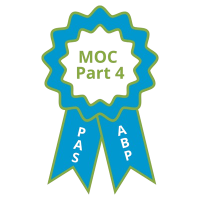Emergency Medicine Works in Progress
Session: Emergency Medicine Works in Progress
WIP 03 - Diagnostic Appendicitis Imaging Challenges in Pediatric Obesity
Saturday, April 26, 2025
2:30pm - 4:45pm HST
Publication Number: WIP 03.7416
Wesley Yim, Doernbecher Children's Hospital at Oregon Health & Science University, Portland, OR, United States; Steven McGaughey, Oregon Health & Science University School of Medicine, Portland, OR, United States
- WY
Wesley Yim, MD (he/him/his)
Pediatric Emergency Medicine Fellow
Doernbecher Children's Hospital at Oregon Health & Science University
Portland, Oregon, United States
WIP Poster Presenter(s)
Background: Appendicitis remains one of the most common pediatric surgical emergencies encountered in daily clinical practice. Current standard of practice often involves obtaining an ultrasound with progression to MRI/CT scan depending on initial US results. Previous research has shown that centers that have high rates of ultrasound usage have average success rates of approximately 77.7%. Previous studies looking at non-visualized appendix radiology images indicate that up to 11.9% of patients who have a nonvisualized appendix on ultrasound do have appendicitis. Understanding the various factors that lead to a nonvisualized appendix other than operator skill remains important for throughput in pediatric emergency departments. One reported factor is obesity. Limited studies in pediatric centers of excellence that have included obesity as a risk factor have indicated that weight is a risk factor for nondiagnostic ultrasound. However, these studies have not investigated if there is a specific cut off where sensitivity significantly decreases.
Objective: This retrospective study design would allow us to investigate if there is a specific weight percentile (based on weight for age) to develop a weight-for-age based model to determine if bypassing ultrasound in favor of advanced imaging (MRI appendix) would improve time to diagnosis
Design/Methods: Retrospective Cohort study design. No consent process expected to be required . Data will be acquired via aggregate data pull from Epic for retrospective chart review using patients diagnosed with appendicitis. Study data exemption granted via QI data research. No IRB requirement.
Incidence rates of nondiagnostic ultrasound and MRI usage will be determined for all three groups , Chi-square analysis to be used for descriptive statistics to compare patient characteristics between those with diagnostic ultrasounds versus non-diagnostic ultrasounds, Multiple linear regression will be used to assess the odds of non-diagnostic ultrasound to determine which patient characteristics are most associated after adjusting for covariates.


